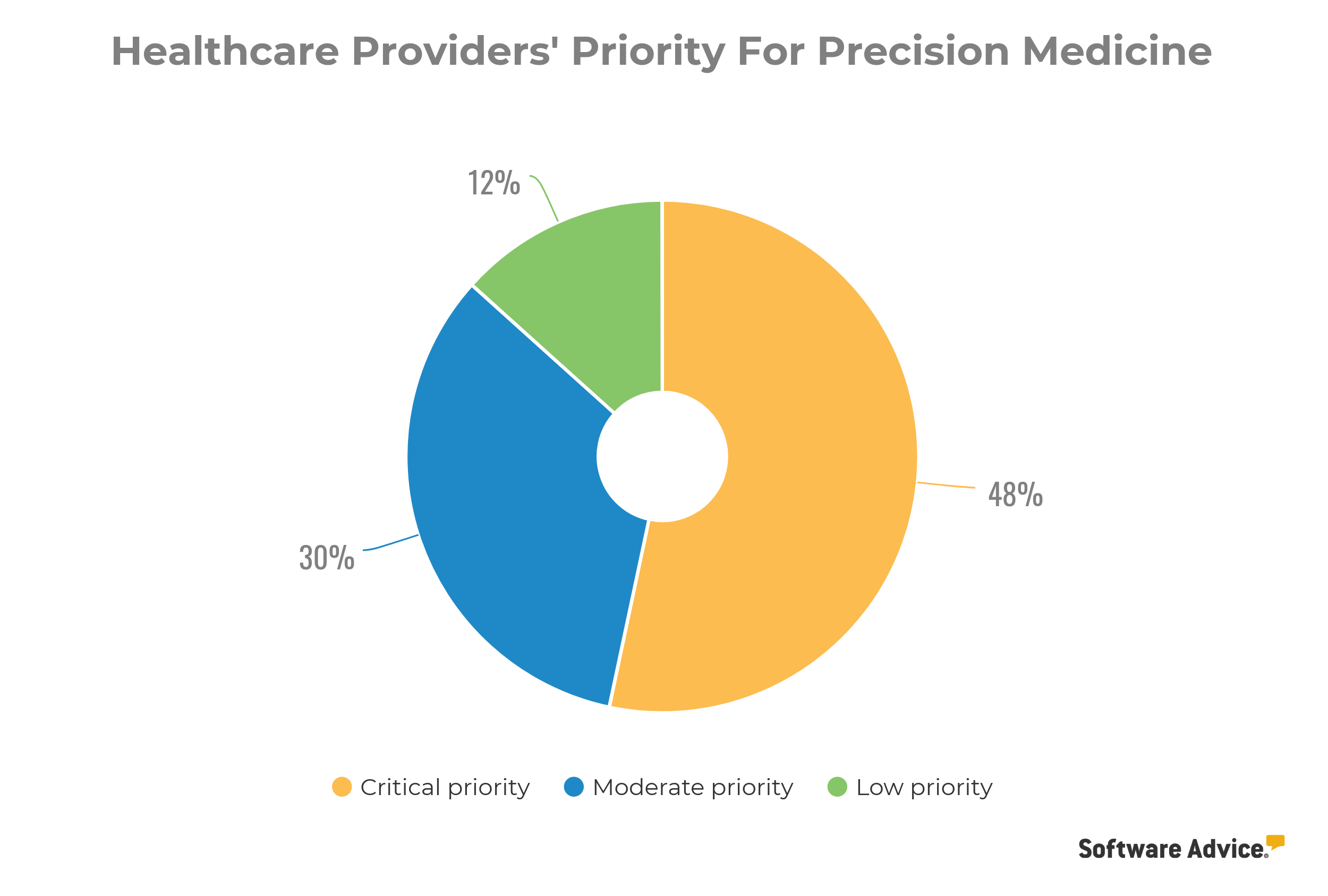Understanding Precision Medicine and Its Benefits
The philosophy behind contemporary healthcare is that one size fits all. Unfortunately, the outcomes of a standardized treatment regimen are not always uniform. For instance, a treatment that helps reduce one lung cancer patient’s tumor may not work in the same way on another lung cancer patient.
But as we gain more understanding of the human body, there is a growing interest in changing the paradigm.
That’s where the concept of precision medicine comes in. Though precision medicine is largely meant to tailor all treatments, it’s particularly suited to treating conditions such as cancer and genetic disorders, which have so far eluded successful cure because of genetic variations between individuals.
Because of its promise, precision medicine is quickly shifting from revolution to evolution and being widely adopted. According to 2018 research, 8 out of 10 healthcare leaders rate precision medicine as a priority for their organization. Among those leaders, 78% prioritize precision medicine as either being critical or moderate.

What is precision medicine?
Precision medicine is an emerging approach to patient care through which physicians choose a treatment method based on the patient’s genetic makeup (also taking into consideration genetic changes resulting from disease) and lifestyle habits.
This approach leverages the premise that by being more educated and aware of the different factors that affect treatment outcomes, physicians can better predict how an individual patient will respond to a certain treatment.
It’s all about shifting from a one-size-fits-all treatment to creating small buckets of patients by studying their health records and genome structures. Treating a patient based on how other patients with similar genetic makeup and pathological changes react is the key here.
At this point, it’s important to call attention to the precision medicine versus personalized medicine debate. Though the terms are quite often used interchangeably, the latter is often misinterpreted and can easily give an incorrect impression.
According to a National Research Council report: “[Precision medicine] does not literally mean the creation of drugs or medical devices that are unique to a patient, but rather the ability to classify individuals into subpopulations that differ in their susceptibility to a particular disease…or in their response to a specific treatment. Although the term ‘personalized medicine’ is also used to convey this meaning, that term is sometimes misinterpreted as implying that unique treatments can be designed for each individual.”
Artificial intelligence (AI) has boosted precision medicine, mainly because of its ability to process “omics” (such as genomics, proteomics or metabolomics) data. Disease treatment, prediction, and discovery are usual targets of AI applications.
Benefits of precision medicine are too great to ignore
The adoption of precision medicine will grow because its benefits to healthcare providers and patients are numerous. Here, we’re highlighting the main benefits.
Improved diagnostic accuracy: Healthcare providers can improve diagnostic accuracy by using patients’ genetic and other molecular data as part of the process. This also irons out possibilities of variations in diagnoses performed by multiple care providers. These factors are crucial to effective patient care.
More targeted treatments: Decades of research show that genetic changes in one patient’s tumor may not match those of another patient with the same type and stage of cancer, so the two patients could respond to the same treatment differently. By focusing on such underlying variations rather than on the disease superficially, precision medicine gives care providers the opportunity to target treatments at specific individuals.
Key actions medical practices should take toward adopting precision medicine
For medical practices of any size, it’s important to understand what they can do to adopt precision medicine as well as promote the treatment within the healthcare ecosystem. A couple of action points medical practices can consider are:
Implement proper systems for data storage and analytics: While applying strategies for precision medicine to patient care, medical practices have to evaluate an overwhelming amount of data. The clinical and genomic data needed to develop precision treatment methods will require practices to deploy advanced data storage and analytics systems.
Data storage infrastructure must also allow seamless data sharing across different technologies such as electronic health records (EHRs) to facilitate the use of best practices in patient care and allow physicians to access and share data. So, if you lack the technical infrastructure required to carry out precision medicine, ensure that you deploy proper infrastructure in advance to access and share up-to-date and actionable data.
Communicate the value of precision medicine to insurance companies: As more medical practices start to adopt precision medicine, more healthcare insurers will be motivated to cover these treatments and tests. However, insurers may be hesitant to reimburse such treatments and genetic tests without knowing their value, that could hinder the growth of precision medicine. So, take the initiative to reach out and educate insurance companies.
To do so, you can collaborate with your insurance providers and try to explain them about the bright future and scope of precision medicine. At first, insurers may not want to pay for targeted therapies as these don’t work for a lot of people, so you need to present them with successful treatment cases you’ve recently done.
In March 2018, Medicare, the government insurance plan for patients age 65 and above, announced that it will pay for genomic testing for patients suffering from advanced cancers. You could present this news as supporting evidence while talking to your insurance providers.
Interested in learning more about how to improve your practice’s efficiency?
Read these other articles: